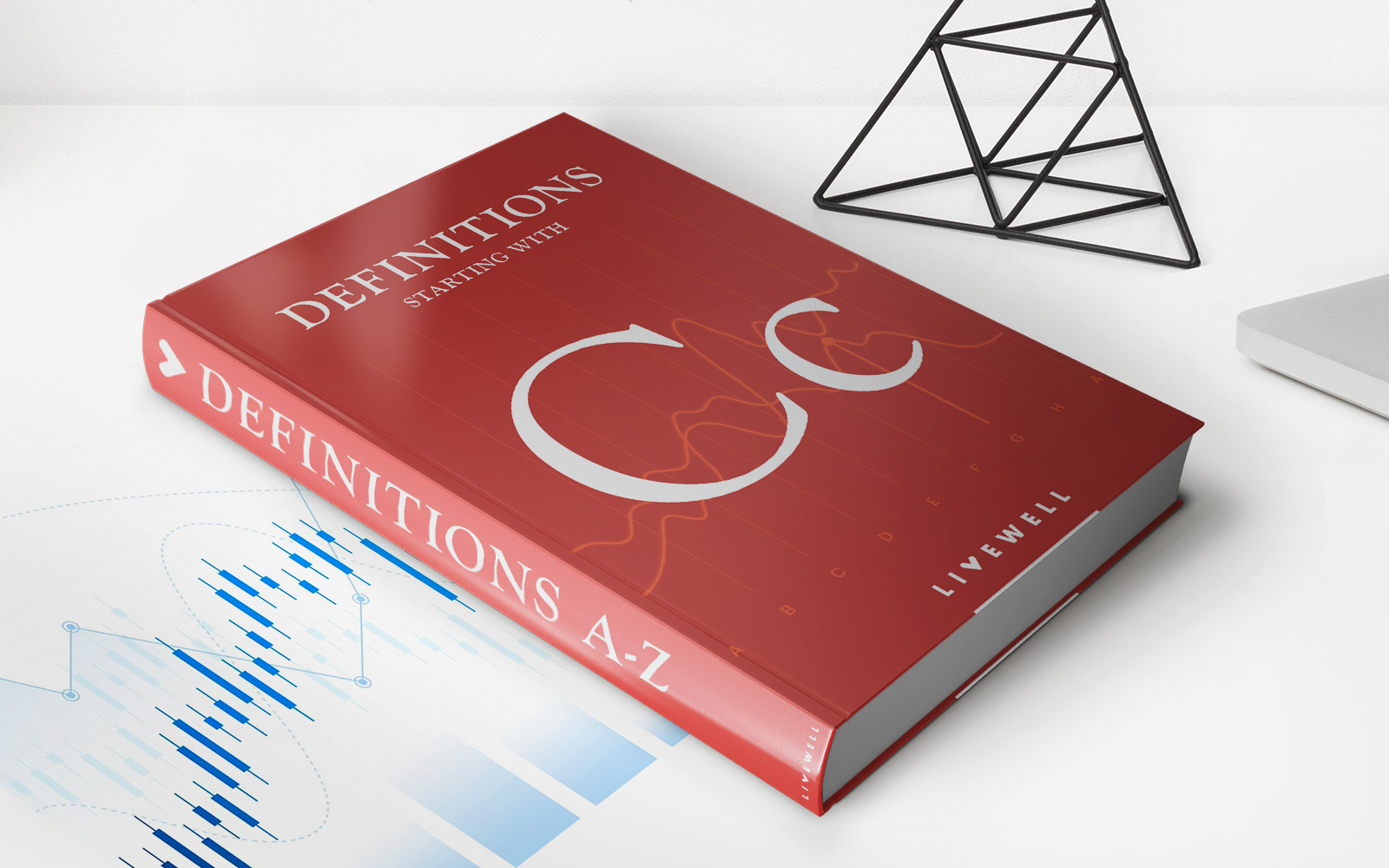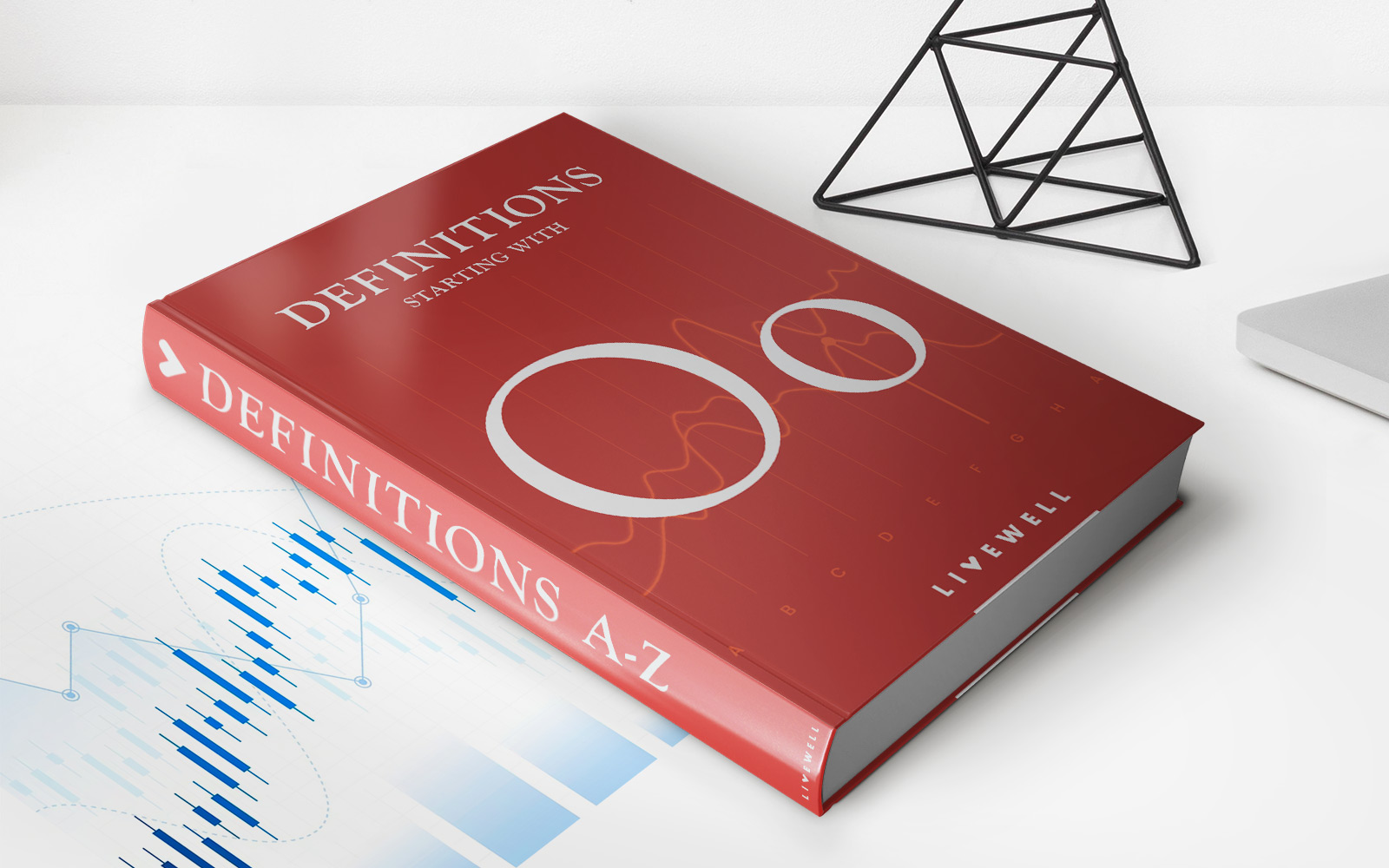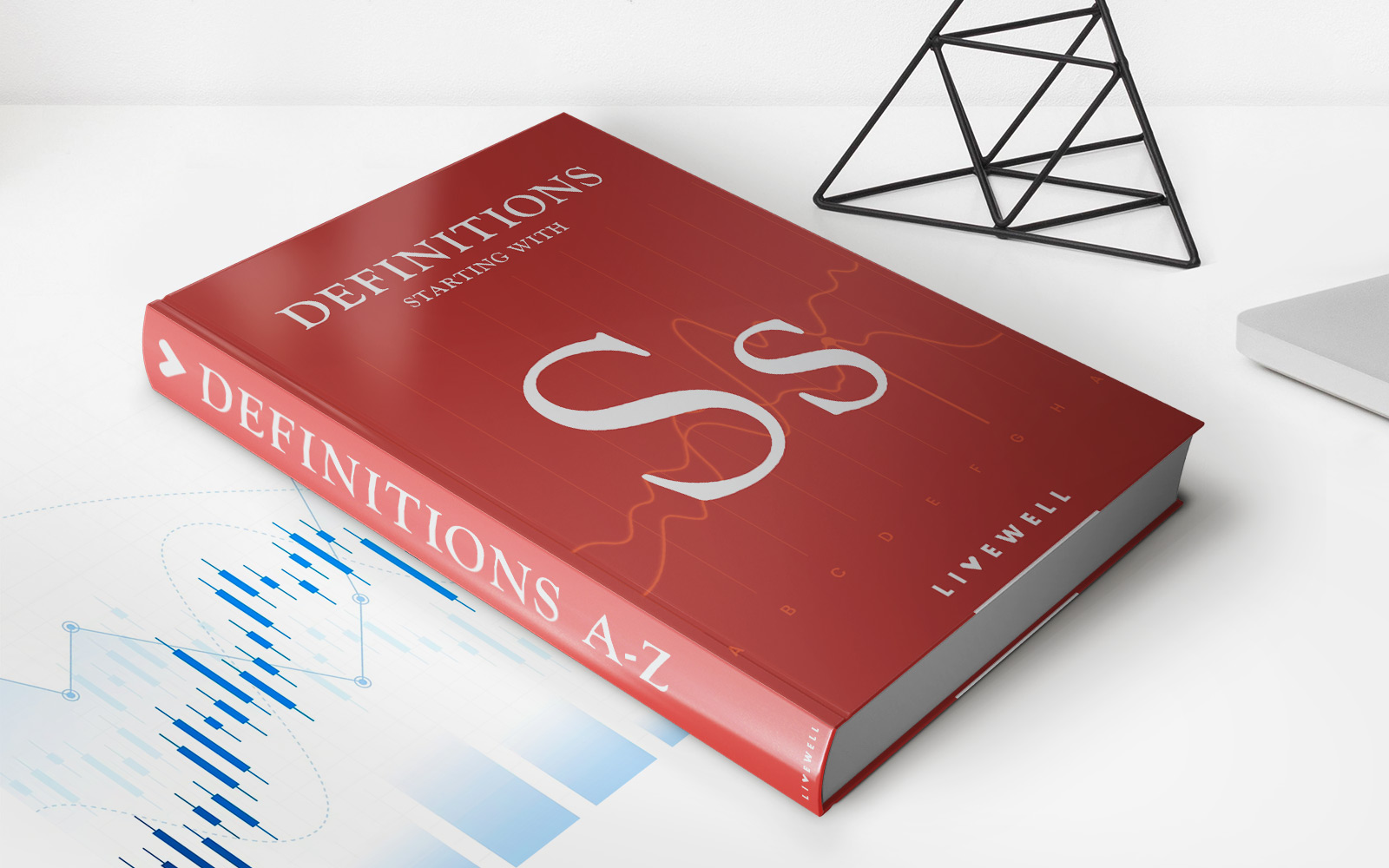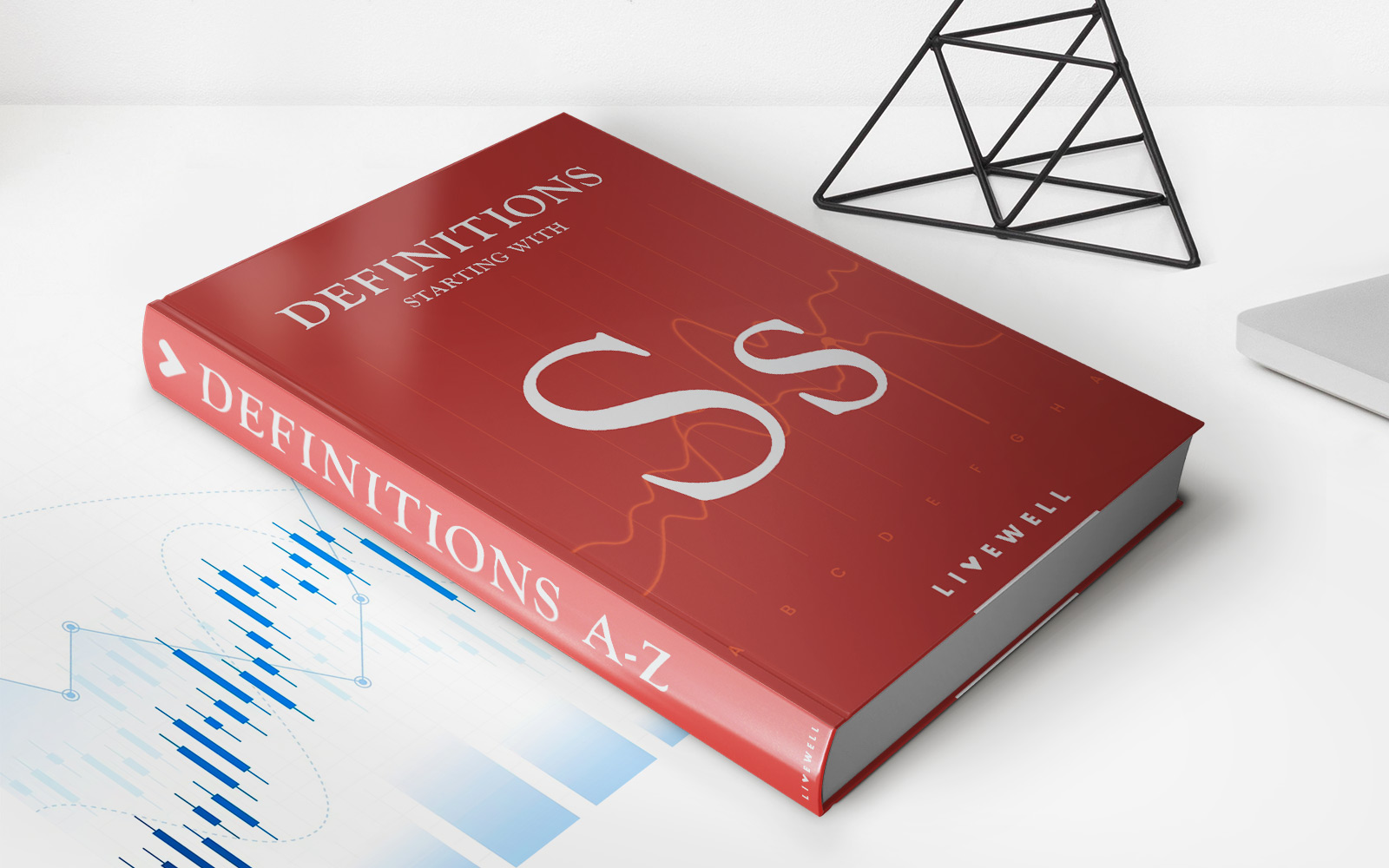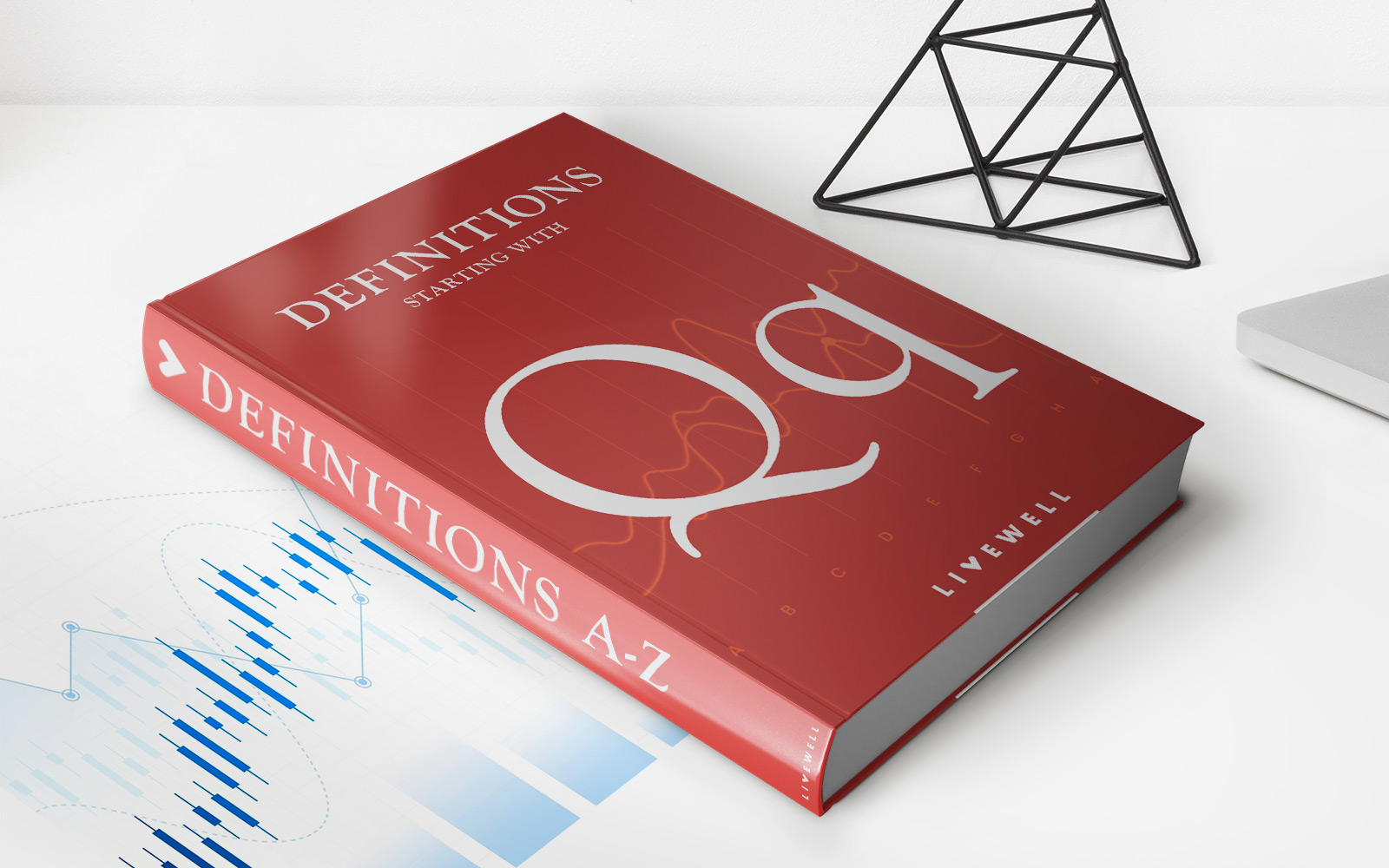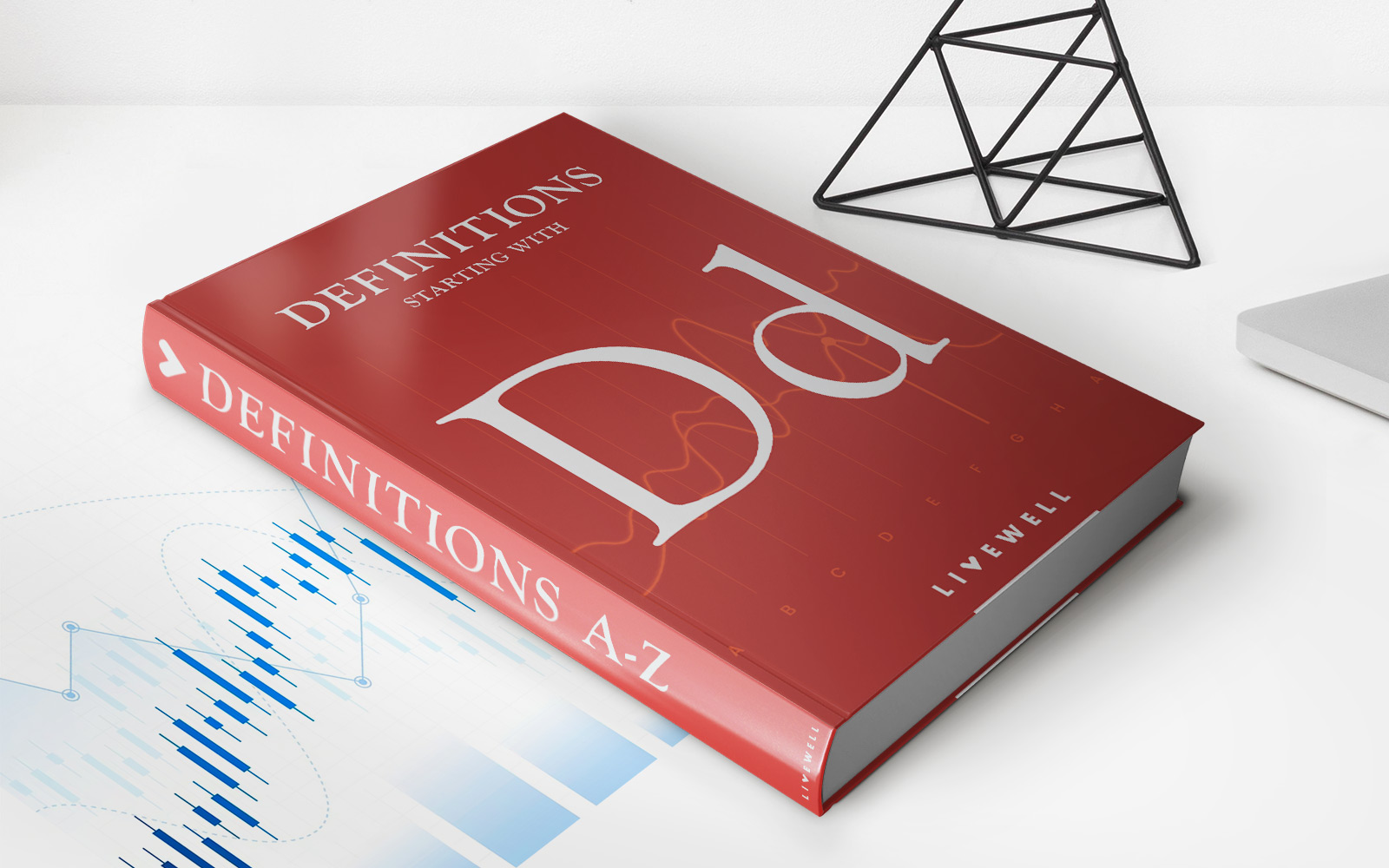

Finance
How Does Stocks And Shares ISA Work
Published: January 17, 2024
Discover how Stocks and Shares ISA works and make the most of your finances. Get expert insights and grow your investments with this tax-efficient savings account.
(Many of the links in this article redirect to a specific reviewed product. Your purchase of these products through affiliate links helps to generate commission for LiveWell, at no extra cost. Learn more)
Table of Contents
- Introduction
- What is a Stocks and Shares ISA?
- Benefits of a Stocks and Shares ISA
- How to Open a Stocks and Shares ISA
- Choosing Investments for your Stocks and Shares ISA
- Tax Benefits of a Stocks and Shares ISA
- Managing and Monitoring your Stocks and Shares ISA
- Withdrawals and Transfers with a Stocks and Shares ISA
- Risks and Considerations of a Stocks and Shares ISA
- Conclusion
Introduction
Welcome to the world of stocks and shares ISAs! If you’re looking to grow your wealth and make the most of your hard-earned money, a stocks and shares ISA can be an excellent investment vehicle to consider. Whether you’re a seasoned investor or just starting out, this article will provide you with a comprehensive understanding of how stocks and shares ISAs work and how they can benefit you.
A stocks and shares ISA, also known as an investment ISA, allows you to invest your money in a range of assets such as stocks, bonds, and funds, all within a tax-efficient wrapper. This means any gains you make on your investments are tax-free, allowing you to keep more of your returns and potentially grow your wealth faster.
Compared to a cash ISA, which only offers a low interest rate, a stocks and shares ISA provides the opportunity for higher returns over the long term. However, it’s important to note that the value of investments can go down as well as up, and you may not get back the full amount you originally invested.
In this article, we will explore the benefits of a stocks and shares ISA, how to open one, the tax advantages it offers, and important considerations when managing your portfolio. Additionally, we will discuss the risks involved and how to choose the right investments for your individual financial goals.
Whether you’re looking to save for retirement, a house deposit, or simply grow your wealth, understanding how a stocks and shares ISA works will give you the knowledge and confidence to make informed investment decisions. So, let’s dive in and explore the exciting world of stocks and shares ISAs!
What is a Stocks and Shares ISA?
A stocks and shares ISA is a tax-efficient investment account that allows you to invest your money in a diverse range of assets, including stocks, shares, bonds, and funds. It is a popular choice for individuals who want to grow their wealth over the long term while also enjoying the tax benefits provided by the ISA wrapper.
Unlike a cash ISA, which only offers a low interest rate, a stocks and shares ISA provides the opportunity for potentially higher returns. The investments held within the ISA can generate income in the form of dividends or capital gains, which can significantly boost your investment value over time.
One of the key advantages of a stocks and shares ISA is its tax efficiency. Any income or capital gains generated within the ISA are not subject to income tax or capital gains tax, up to the annual ISA allowance set by the government. This means you can keep more of your investment returns and potentially achieve greater growth compared to investing outside of an ISA wrapper.
Furthermore, you have the flexibility to choose from a wide range of investment options within a stocks and shares ISA. You can invest in individual stocks of companies, bonds issued by governments or corporations, funds managed by professionals, or a combination of these assets. This allows you to diversify your portfolio and spread the risk across different investments.
It’s important to note that a stocks and shares ISA is a long-term investment vehicle, suitable for individuals with a higher risk tolerance who are willing to invest for at least five years or more. The value of investments can fluctuate, and you may not get back the full amount you originally invested.
In summary, a stocks and shares ISA provides a tax-efficient way to invest your money in a wide range of assets. It offers the potential for higher returns compared to a cash ISA, but it also comes with higher risk. Before investing in a stocks and shares ISA, it’s crucial to understand your financial goals, risk tolerance, and the investment options available to make informed decisions that align with your needs.
Benefits of a Stocks and Shares ISA
Investing in a stocks and shares ISA brings with it a host of benefits that make it an attractive option for many investors. Here are some key advantages:
1. Tax Efficiency: One of the major benefits of a stocks and shares ISA is its tax efficiency. Any income or capital gains generated within the ISA are not subject to income tax or capital gains tax, up to the annual ISA allowance. This allows you to maximize your investment returns and keep more of your money.
2. Potential for Higher Returns: Unlike a cash ISA, which offers low interest rates, a stocks and shares ISA provides the potential for higher returns over the long term. By investing in a diverse range of assets, such as stocks, shares, bonds, and funds, you have the opportunity to benefit from the growth of the financial markets.
3. Flexibility and Choice: A stocks and shares ISA offers a wide range of investment options. You can choose from individual stocks, bonds, and funds, giving you the flexibility to create a diversified portfolio that aligns with your financial goals and risk tolerance. This flexibility allows you to adapt your investment strategy as market conditions change.
4. Long-Term Growth Potential: Stocks and shares ISAs are designed for long-term investing. By staying invested over a longer period, you have the potential to benefit from the compounding effect of reinvesting any income or capital gains generated by your investments. This can significantly enhance your overall returns.
5. Wealth Preservation: Inflation erodes the purchasing power of money over time. By investing in assets that have the potential to outpace inflation, such as stocks and shares, you have a better chance of preserving and growing your wealth in the long term.
6. Diversification: Investing in a stocks and shares ISA allows you to diversify your portfolio across different asset classes, sectors, and geographies. Diversification helps spread the risk and reduces the impact of any single investment performing poorly.
7. Easy Access to Funds: Unlike some long-term investment vehicles, stocks and shares ISAs offer easy access to your funds. You can sell your investments and withdraw the money at any time, although it’s important to consider any potential charges or fees involved.
Overall, a stocks and shares ISA provides individuals with a tax-efficient way to invest their money, with the potential for higher returns compared to a cash ISA. The flexibility, choice, and long-term growth potential make it an appealing option for those looking to grow their wealth over time.
How to Open a Stocks and Shares ISA
Opening a stocks and shares ISA is a straightforward process that can be done online, through a financial advisor, or directly with a financial institution. Here are the key steps to open a stocks and shares ISA:
1. Research and Compare Providers: Start by researching and comparing different providers that offer stocks and shares ISAs. Look for reputable institutions with a strong track record and competitive fees and charges. Consider factors such as investment options, customer service, and online platforms.
2. Decide on your Investment Strategy: Before opening a stocks and shares ISA, it’s important to define your investment strategy. Determine your financial goals, risk tolerance, and investment timeframe. This will help guide your choices when selecting investments for your ISA.
3. Choose the Right Type of Stocks and Shares ISA: There are various types of ISAs available, including self-select ISAs and managed ISAs. Self-select ISAs allow you to choose and manage your own investments, while managed ISAs are professionally managed by investment experts. Consider your level of investment knowledge and preference before making a decision.
4. Gather Required Documents: When opening a stocks and shares ISA, you will typically need to provide identification documents such as a passport or driver’s license, proof of address, and any relevant financial information. Check with your chosen provider for their specific requirements.
5. Complete the Application: Once you have selected a provider, you can proceed with completing the application. This can usually be done online, and the process may involve providing personal information, investment preferences, and agreeing to terms and conditions.
6. Fund your ISA: After your application is approved, you will need to fund your stocks and shares ISA. This can be done by making a cash deposit or transferring funds from an existing ISA or investment account. The minimum deposit requirement may vary between providers, so ensure you meet the specified amount.
7. Choose Investments: Once your ISA is funded, it’s time to choose your investments. Consider factors such as your investment objectives, risk tolerance, and desired asset allocation. You can opt for individual stocks, bonds, funds, or a combination of these depending on your preferences.
8. Monitor and Review: Regularly monitor the performance of your chosen investments within your stocks and shares ISA. Keep track of market conditions, review your portfolio regularly, and make adjustments as needed to ensure your investments remain aligned with your goals.
Remember, it’s important to do your own research and seek professional advice if needed before making any investment decisions. Opening a stocks and shares ISA can be a valuable step towards achieving your long-term financial goals, providing you with a tax-efficient way to grow your wealth over time.
Choosing Investments for your Stocks and Shares ISA
Choosing the right investments for your stocks and shares ISA is crucial to achieving your financial goals. Here are some factors to consider when selecting investments:
1. Risk Tolerance: Assess your risk tolerance before making investment decisions. Determine how much volatility you are comfortable with and choose investments that align with your risk appetite. Generally, stocks and funds have higher risk but also offer the potential for higher returns, while bonds offer more stability but lower potential for growth.
2. Investment Objectives: Clearly define your investment objectives. Are you aiming for long-term growth, income generation, or a combination of both? Your investment objectives will help guide your selection of specific stocks, funds, or other investment options.
3. Diversification: Diversify your portfolio to spread the risk. Investing in a variety of assets across different sectors, regions, and industries can help protect your portfolio from the impact of any single investment underperforming. Consider a mix of stocks, bonds, and funds to achieve diversification.
4. Time Horizon: Consider your time horizon for investment. If you have a longer timeframe, you may be more willing to tolerate short-term market fluctuations and invest in higher-risk assets. On the other hand, if you have a shorter timeframe, you may opt for more conservative investments.
5. Investment Expertise: Assess your level of investment knowledge and expertise. If you have the time, knowledge, and desire to choose and manage your own investments, a self-select stocks and shares ISA may be suitable. If you prefer professional management, consider a managed stocks and shares ISA.
6. Research and Analysis: Conduct thorough research and analysis before making investment decisions. Study the performance history, fundamentals, and future potential of individual stocks or funds. Consider factors such as company financials, industry trends, and the fund manager’s track record.
7. Cost Considerations: Evaluate the costs associated with your investments. Look at the fees and charges of the funds or investment platforms you choose, as these can impact your overall returns. Consider the ongoing management charges, transaction fees, and any other associated costs.
8. Keep Abreast of Market News: Stay informed about market news and economic trends that could impact your investments. Keep up with company earnings reports, industry updates, and global economic factors that may affect the performance of your chosen investments.
Remember, investing in a stocks and shares ISA involves risk, and there is no guarantee of returns. It’s important to regularly review and monitor your investments and make adjustments as needed. If you are unsure about making investment decisions, consider seeking advice from a financial advisor to help you navigate the investment landscape and select suitable investments for your stocks and shares ISA.
Tax Benefits of a Stocks and Shares ISA
One of the significant advantages of investing in a stocks and shares ISA is the tax benefits it offers. Here are the key tax advantages of a stocks and shares ISA:
1. Income Tax: Any income generated within a stocks and shares ISA is not subject to income tax. This includes dividends received from shares or funds held within the ISA. This can be particularly advantageous for individuals in higher tax brackets, as it allows them to retain more of their investment income.
2. Capital Gains Tax: The gains made within a stocks and shares ISA are also exempt from capital gains tax. This means that when you sell your investments within the ISA and realize a profit, you do not have to pay tax on those gains. This can be especially beneficial for long-term investors who have the potential to generate significant capital gains over time.
3. No Reporting Requirements: Any gains or income within a stocks and shares ISA do not need to be reported on your tax return. This simplifies the tax filing process and reduces administrative burden, as you are not required to keep records of your ISA transactions.
4. No Dividend Withholding Tax: When investing directly in shares, dividends may be subject to withholding tax for non-ISA investors. However, within a stocks and shares ISA, there is no withholding tax on dividends received. This means you can benefit from the full dividend amount without any tax deductions.
5. No Capital Gains Tax Allowance Used: By using a stocks and shares ISA, you can utilize your annual capital gains tax allowance elsewhere. This is particularly beneficial for individuals with other investments outside of the ISA, as they can make use of the tax-free allowance on those investments while still enjoying tax-free gains within the ISA.
6. Inheritance Tax Planning: Stocks and shares ISAs are included within the individual’s estate for inheritance tax purposes. However, any investments held within the ISA are free from inheritance tax. This means that upon your death, the value of your ISA can be passed on to your beneficiaries without them incurring any tax liability.
It is important to note that these tax benefits are subject to the annual ISA allowance set by the government. For the 2021/2022 tax year, the allowance is £20,000. Any contributions made in excess of this limit will not receive the tax advantages provided by the ISA wrapper.
In summary, a stocks and shares ISA offers significant tax benefits, including exemption from income tax and capital gains tax. These benefits can help you maximize your investment returns and grow your wealth more efficiently. However, it is always recommended to consult with a tax advisor or financial professional to fully understand your individual tax situation and how a stocks and shares ISA can best align with your financial goals.
Managing and Monitoring your Stocks and Shares ISA
Managing and monitoring your stocks and shares ISA is essential to ensure that your investments remain aligned with your financial goals and risk tolerance. Here are some key steps to effectively manage and monitor your ISA:
1. Regular Portfolio Review: Conduct regular reviews of your stocks and shares ISA portfolio to assess its performance and make any necessary adjustments. Review each investment’s progress, analyze market trends, and evaluate their ongoing suitability for your investment goals.
2. Stay Informed: Keep yourself updated with the latest market news and developments that may impact your investments. Follow financial news sources, read investment publications, and keep an eye on economic indicators that could influence the performance of specific sectors or asset classes.
3. Rebalance Your Portfolio: Over time, the performance of different investments within your portfolio may vary, leading to a shift in your asset allocation. Regularly rebalance your portfolio by buying or selling investments to maintain your desired mix of assets and risk exposure.
4. Monitor Investment Costs: Keep track of the costs associated with your investments, such as management fees, transaction charges, and custodial fees. High costs can eat into your returns over time, so ensure that the fees are reasonable and align with the value provided by the investment.
5. Keep a Long-term Perspective: Remember that investing in a stocks and shares ISA is a long-term endeavor, and short-term market fluctuations should not be a cause for panic. Have a clear understanding of your investment goals and maintain a disciplined approach, focusing on your long-term investment strategy.
6. Consider Professional Advice: If you are uncertain about managing your stocks and shares ISA on your own, consider seeking professional advice. A financial advisor can provide valuable insights, help you navigate market complexities, and ensure that your investments are in line with your goals and risk tolerance.
7. Utilize Online Tools and Platforms: Many investment platforms offer online tools and resources to help you manage and monitor your stocks and shares ISA. These tools may include portfolio tracking, performance analysis, and research reports, which can empower you to make informed investment decisions.
8. Review Your Investment Strategy Periodically: Make it a habit to review and reassess your investment strategy periodically. Changes in personal circumstances, financial goals, or market conditions may require adjustments to your portfolio. Regularly evaluate your investment strategy to ensure it remains aligned with your evolving needs and objectives.
By effectively managing and monitoring your stocks and shares ISA, you can stay on track towards achieving your financial goals. Remember, investing involves risk, and past performance is not indicative of future results. Stay informed, be proactive, and make decisions based on thorough analysis to optimize the performance of your stocks and shares ISA.
Withdrawals and Transfers with a Stocks and Shares ISA
Withdrawing funds or transferring your stocks and shares ISA can be done with relative ease. Here’s what you need to know about withdrawals and transfers:
1. Making Partial or Full Withdrawals: If you need to access some or all of the funds in your stocks and shares ISA, you can make withdrawals at any time. This can be done through your ISA provider’s online platform, phone service, or by submitting a withdrawal request. Keep in mind that withdrawing funds may impact the performance of your investments and may result in financial penalties or charges depending on your provider’s terms and conditions.
2. Tax Benefits of Withdrawals: With a stocks and shares ISA, any withdrawals you make are tax-free. This means you won’t be liable for income tax or capital gains tax on the amount withdrawn. The tax benefits of a stocks and shares ISA apply regardless of how much or how frequently you withdraw funds.
3. Understanding Transfer Rules: If you’d like to transfer your stocks and shares ISA to another provider, it’s important to follow the transfer rules set by HM Revenue and Customs (HMRC). You can transfer your ISA from one provider to another without it affecting your annual ISA allowance. However, it’s crucial to initiate the transfer process correctly to maintain the tax benefits and avoid any unnecessary tax liability.
4. Transferring to a Different ISA Type: You can also choose to transfer your stocks and shares ISA to a different type of ISA, such as a cash ISA or an Innovative Finance ISA. This is known as an ISA-type transfer. However, it’s essential to check whether the provider you intend to transfer to accepts ISA transfers and if they offer the investment options you desire.
5. Transfer Completion Timeframe: ISA transfers typically take a few weeks to complete but may take longer depending on various factors. The transfer process involves your current ISA provider transferring your investments and cash to the new provider. It’s advisable to contact both providers to understand their specific transfer procedures and any requirements they may have.
6. Consult with Your New Provider: Before initiating a transfer, it’s advisable to consult with your prospective provider. They will guide you through the transfer process and provide any necessary paperwork or instructions. It’s crucial to ensure that the new provider can meet your investment needs and offers competitive fees and features.
7. Seek Professional Advice: If you’re unsure about the withdrawal or transfer process, or if you have specific tax or investment-related questions, it’s advisable to seek guidance from a financial advisor. They can provide personalized advice and help navigate the complexities of withdrawing or transferring funds from your stocks and shares ISA.
Remember that transferring or withdrawing funds from your stocks and shares ISA should be done mindfully, taking into consideration your long-term investment goals, investment performance, and potential tax implications. By staying informed and understanding the rules surrounding withdrawals and transfers, you can make informed decisions that align with your financial objectives.
Risks and Considerations of a Stocks and Shares ISA
While a stocks and shares ISA offers the potential for growth and tax advantages, it’s important to be aware of the risks and considerations involved. Here are some key factors to keep in mind:
1. Market Volatility: The value of investments within a stocks and shares ISA can fluctuate significantly due to market conditions and economic factors. There is always a risk of loss, and the value of your investments can go down as well as up. It’s crucial to be prepared for short-term volatility and take a long-term perspective with your investments.
2. Investment Risk: Different investments carry varying levels of risk. Stocks and equity-based funds tend to be more volatile, while bonds and cash-based investments offer more stability. It’s important to understand the risk profiles of your chosen investments and ensure they align with your risk tolerance and investment objectives.
3. Underperformance: There is a risk that some of your investments within the stocks and shares ISA may underperform compared to others. Individual stocks or funds may face challenges or unforeseen circumstances that impact their performance. Diversification and regular portfolio review can help mitigate the impact of underperforming investments.
4. Inflation Risk: While stocks and shares have the potential to outpace inflation in the long run, there is still a risk that inflation may erode the purchasing power of your investments. It’s important to consider the potential impact of inflation and include inflation-hedging investments in your portfolio if appropriate for your financial goals.
5. Liquidity Risk: Some investments within a stocks and shares ISA may have limited liquidity, meaning they may be difficult to sell quickly or at a desirable price. This risk is more prevalent in less-developed markets or with certain types of funds. It’s important to consider the liquidity of your investments, especially if you anticipate needing access to your funds in the short term.
6. Monitoring and Management: Successfully managing a stocks and shares ISA requires active monitoring and regular review of your investments. This may involve staying informed about market news, economic trends, and company performance. If you prefer a hands-off approach, a managed stocks and shares ISA may be more suitable to ensure professional management of your investments.
7. Professional Advice: If you lack experience or expertise in investing, it’s advisable to seek professional advice before making investment decisions. A financial advisor can help you assess your risk tolerance, develop an investment strategy, and provide guidance on suitable investment options for your stocks and shares ISA.
8. Consider Diversification: Diversifying your portfolio across different asset classes, sectors, and geographic regions helps spread the risk. A well-diversified portfolio can help mitigate the impact of any single investment underperforming.
While the risks associated with a stocks and shares ISA should not be overlooked, they can be managed through careful consideration of your investment choices, regular portfolio monitoring, and a long-term investment approach. By understanding the risks and considering your investment objectives, time horizon, and risk tolerance, you can make informed decisions to optimize the potential returns of your stocks and shares ISA.
Conclusion
A stocks and shares ISA offers individuals a tax-efficient way to invest in a diverse range of assets and grow their wealth over the long term. Throughout this article, we have explored the various aspects of stocks and shares ISAs, including what they are, their benefits, how to open one, choosing investments, tax advantages, managing and monitoring, withdrawals and transfers, as well as the risks and considerations involved.
By investing in a stocks and shares ISA, you can benefit from tax advantages such as tax-free income and capital gains, which can significantly enhance your investment returns. The opportunity for higher returns compared to cash ISAs, along with the flexibility and choice of investment options, makes stocks and shares ISAs an attractive option for individuals seeking long-term growth.
However, it’s crucial to understand the risks involved and carefully consider the investment choices within your stocks and shares ISA. Market volatility, underperformance, and inflation risk are factors to be mindful of. Regularly monitoring and managing your portfolio, diversifying your investments, and adjusting your strategy when necessary can help mitigate potential risks and optimize your investment outcomes.
Withdrawals and transfers can be done with relative ease, but it’s important to understand the rules and implications associated with these actions. Seeking professional advice, especially if you’re uncertain about investment decisions or tax implications, can provide valuable guidance along the way.
In conclusion, a stocks and shares ISA can be a valuable tool for individuals looking to grow their wealth over the long term while enjoying the tax benefits provided by the ISA wrapper. By understanding the fundamentals, conducting thorough research, and making informed investment decisions, you can leverage the potential of stocks and shares ISAs to achieve your financial goals.
